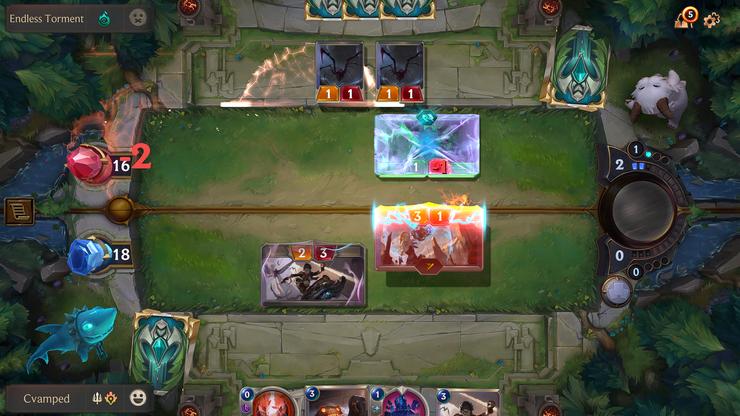|
|
Competitive Card Game (Unreleased)Use strategy and wit to build your deck and defeat your opponent. |
Due to non-disclosure agreements, I can’t publicly share details or images. Please email me if you’d like more information.
I worked as the lead UI/UX designer for an unreleased competitive card game. Due to the contract-based nature of our work, our team grew and shrank over the course of development, with some team members leaving and returning when the schedule permitted it. Our typical team size hovered around 3-5 people.
Initially, I was brought onto the project to do a simple UI pass, but I soon realized I could help even more with development and implementation. For my first “extra” contribution, I worked with the engineers, game designer, and art director to produce a redesigned game board, which supported some gameplay changes the designer wanted to make. We liked working with each other so much, I ended up staying on the team a lot longer than anticipated!
The UI and UX I created for this project take lots of cues from other card games. It was important to me that this game takes advantage of its digital-first design, so I looked to other digital-first card games, like Hearthstone, Legends of Runeterra, and Infinity Wars. These games are packed with fun, novel ways to leverage the digital format, supporting quicker, smoother UX. As a simple example, they use visual effects and animations to indicate card actions – in a physical card game, these actions would be spoken out loud, or indicated by simple tokens.

The UI design and UI art were made to match the visual styles developed by the game’s art director. In the world of the game, there are a number of factions, each with a distinct visual style. The majority of the generic UI style was based on the largest non-playable faction. I developed custom visual elements and a design library for this faction, then prefabbed them in Unity for handoff. Once the engineer hooked up the UI, we’d meet up to make sure it all works properly.
Our team used the Agile Scrum methodology to organize our work, so every two weeks, we’d plan out our sprints and talk about the project’s next iteration. Although we were a remote team, we communicated frequently throughout the sprint to update one another on our progress and milestones.
The best part of this project was working with the amazing team! I couldn’t have asked for better teammates. Everyone was committed to going beyond what’s required, pouncing on every opportunity to improve the player experience. Feedback was given and received with warmth and kindness. I’m endlessly impressed by my teammates’ intuition and vision, and I’m so excited for the game’s announcement so I can share it with you! Keep an eye out!
